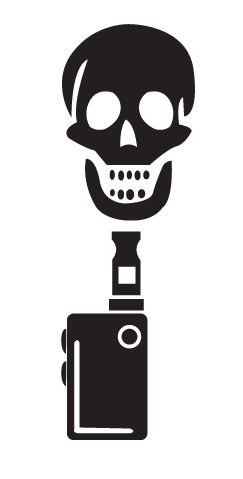Health risks of vaping surfacing
December 16, 2019
Patients reported chest pains, weight loss, nausea, vomiting, and fevers. A number of cases resulted in a whole range side effects possibly ending with being sent to the hospital. Some have died.
All of this is caused by one device, one culprit: vaping.
Vaping was introduced to the American market in 2007 and has since grown in popularity. According to the FDA, “among middle and high school students, 3.62 million were current users of e-cigarettes in 2018.”
The medical community and schools are now realizing a number of consequences connected to the habit.
“Every time I give a presentation on vaping, I have to update the number of deaths,” Drug and Alcohol Counselor Bethany Condon said.
While death has been an unfortunate outcome for 48 people, the number of people who have been hospitalized, potentially due to vaping is considerably more, according to the CDC. There have been 2,291 patients in the United States, as of Dec. 3. While hospital cases of vaping do appear to be declining, the CDC reported, they have not stopped and, there are still reports of new patients coming in.
Not all of the symptoms of vaping require hospitalization. There are less serious consequences such as being “jittery, and anxious, and irritable, and grumpy with people because they [the vapers] are addicted to nicotine,” Condon said.
Such symptoms can negatively affect relationships with people and performance in school, Condon said. Along with that, those who are caught with vaping devices on school property face punitive and possibly legal consequences.
“The first offense, you will get five days of OSS, out of school suspension,” Condon said. “Or, if you choose to do three days of ISS and three sessions with me, you get your suspension deferred. So instead of having five days OSS, which is a big consequence—that’s a week out—you’ll get three ISS and three sessions with me. Your second offense, you get ten days OSS, which is two weeks out of school or five days ISS and five more sessions with me. And then the third offense is expulsion.”
The school has put the system in place to give teens a way out of vaping. Condon said that most of the time, students vape to gain acceptance in a group, or to combat stress and anxiety. She tries to help students with therapy, but that can be difficult not only because of the view that vaping is seen as “cool” but also because of the nicotine in the product, making vaping addictive.
Nicotine is, possibly, a gateway drug meaning that “if you try other things you will become addicted to them quicker,” Condon said, “so, young people having their brains primed to other things, so if they were to try things in their young adulthood, like marijuana, drinking, cocaine, heroin, other big drugs, their brains will have already been ready for that addiction because of their vaping.”
Condon recommends that those interested in quitting vaping talk to her in the counseling office, or visit larimer.org/youthquit.



